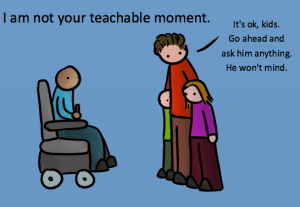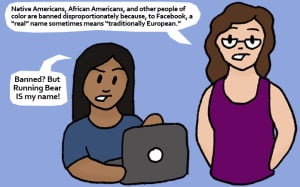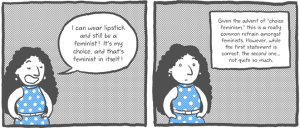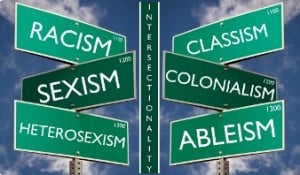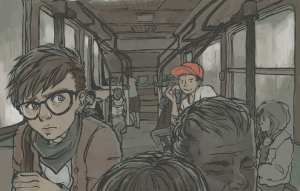When I came out to myself and others in high school as a gay man, I thought I was finished with my identity. I thought I would no longer have to lie in bed thinking about who I liked and why. I thought I was done. Settled. Case closed.
But I was wrong. So, so wrong. My identity was and is more fluid than I had thought.
There would be so many ways that I would change enormously, in ways that even I didn’t expect. But as a kid, the idea of fluid identities never crossed my mind.
I spent a lot of my childhood finding ways to distract myself from the fact that I liked men. It was agonizing. I had no possibility models, no queer friends, no social script for dealing with that taboo attraction as a Vietnamese child born to refugees.
The only ways that I could find outlets for satisfying my queer curiosities was through TV shows and porn. But both of these were jam-packed with thin white men and muscled white men. Most of what I saw was different shades of white. People of color as sidekicks and punching bags for racist jokes. I was offered a singular narrative of how to exist that didn’t fit my body, didn’t fit my history.
I started measuring myself by masculine cisnormative standards. I lifted weights and tried to find ways to get taller. I scrutinized my small frame. I even hated my brown nipples, of all things.
When I think about the type of man that I liked back then, I conjure an image in my head of a tall white man with dark hair and light eyes, with muscles and money, without disabilities and with boundless love for me.
My image of manhood falls in line with the fact that manhood has been constructed by European colonizers to fit only white, non-disabled bodies. My attractions were deeply entrenched in white supremacy.
But because I didn’t know how to exist in the world, I latched onto the thing that I thought felt closest to how I identified.
Though I was still dealing racist standards among gay men, I thought I was set. I thought I had found an identity – something to make my brain stop buzzing every night. Because it took my whole teenage life to come to the realization that I liked men, I thought that I knew all I needed to know about my sexuality.
To me, liking men was simple enough to understand. The relief I felt after claiming gay manhood was seductive. It convinced me that I knew myself, when in fact I didn’t at all. I’m still getting to know myself every day.
In retrospect, deciding that I liked men was not as clear-cut as I had thought. Not for me, not for anyone else.
Although I was mostly attracted to white cis men in my teenage years, that gradually changed. Once I was able to examine how my attractions were harmful both to myself and other queer and trans people of color, I developed a natural aversion to cis white men.
As I became more conscious of how cis white men of harmed me in the past and may harm me in the future, it made sense to me that a growing number of men I was attracted to were not white and not cis.
My gender changed, too.
The eureka moment I thought I had when I proclaimed myself as a cis gay man was short-lived. I could barely take a breath before my body started telling me that this manhood shit was just not for me. When I gave myself the permission to break away from the gender binary, it felt like I was floating.
At 17, I was a gay man. At 20, I am a queer, gender nonconforming femme. Hell, when cis white people test me enough, I am a fire-breathing dragon.
As my own gender and sexuality has changed over the years, I’ve become aware of the ways gender and sexuality are taken for granted as concrete and rigid.
By allowing myself to be fluid, I gave myself the trust and love I deserved in order to change and grow.
Here are three things I’ve learned along the way.
1. Social Constructs Make Sexuality More Complicated Than We Think
When a person decides that they like men, are they considering that manhood exists in multiplicity? When they say that they like men, are they including trans men? If they mean that they like people with penises, do they realize that there are women with penises, men with penises, and non-binary people with penises?
Much of the way we frame our sexual attraction is through cisnormative standards of gender. When someone says they like men, you can bet they mean they like cis men. When I identified as gay, I only knew gender as being cis men or cis women. In reality, the possibilities of gender are endless.
The reality is that manhood is constructed. Part of why identity is so fluid and hard to understand is because we are attracted to constructed ideas of gender and sexuality. We are attracted to ideas of manhood.
If gender is a social construct, how do we make sense of the fact that we attracted to a fabricated idea?
Much of what we are attracted to is what we’re told is attractive, because our sex life is not removed from politics. Just as we’re encouraged to be attracted to whiteness, we’re also encouraged to be attracted to the so-called “opposite sex.” In reality, sex is also constructed – it’s nothing other than labels arbitrarily slapped on genitalia.
If we are attracted to one version of manhood one day, that may change tomorrow. Cultural standards about what is beautiful change all the time, and since these standards influence our own attractions, the attractions of straight men today may be different from their ancestors.
Since heterosexuality can be so easily changed, it’s not as stable as straight people like to think.
2. Highlighting Fluidity Counteracts the Privileging of Some Identities Over Others
It’s important to consider the fluidity of identity in order to denormalize the identities of cis, straight men, for instance.
While I believe that everyone should have the individual autonomy to define their identities for themselves, we need to interrogate why the identities of cishet men are considered the default.
Cishet men are never questioned about when they knew they were cisgender or when they knew they were straight. Meanwhile, people who are queer, trans, and/or non-binary are always asked to explain their identities to others in order to verify themselves. Identities seen as abnormal are always placed under suspicion.
People who are assigned male at birth are assumed to grow up to be cishet men and are groomed as such. They are given blue, green, and red clothes; cars, trucks, and action figures; and they are expected to play sports.
From birth, the world affirms the identity of the cishet man, and he goes through a series cultural rites that construct that manhood for him. The better he performs to expectations, the more of a man he is.
Much of manhood is proving repeatedly that you are a man, which is how we are reminded how manhood is constructed. Although it’s considered the default, manhood is fragile enough to require repeated performance. Boys are expected to excel in the theatrics of masculinity in order to secure manhood. Just as many trans people are expected to prove their gender, men are expected to prove their manhood.
Cishet men who present in ways that are considered “normal” are rarely asked, “Are you absolutely sure that you’re a man? How do you know you’re straight?”
Even among cishet men, there are different experiences along racial lines. While white cishet men are given more leeway for expressing their manhood is myriad forms, Black men are policed for the hypermasculinity that is projected on them. And many non-Black Asian men are perceived to be feminine regardless of how they present.
The way that people of color are racialized displaces them from the gender binary. People of color are unable to access a gender that was made to harm them.
By operating from a lens of fluidity, we are essentially destabilizing racial tropes that are taken for granted.
3. Encouraging Fluidity Eases the Pressures of Being Trans or Gender Non-Conforming
When male-assigned people fail to perform masculinity, the consequences can be deadly.
Trans women and transfeminine people may endure violence from the State, from intimate partners, from their family members, and from total strangers. They can be attacked in the bathroom, on the street, and on the subway platform. People attempt to erase their identities while affirming those of cishet men.
The instinctual response for marginalized people may be to prove their gender to their world, to normalize it, to naturalize it.
Trans people are encouraged to be “passing” for cis in order to have their gender affirmed. Trans people have to be able to go without being identified as such in order to be accepted and to reduce their chance of being murdered.
Trans people and gender non-conforming people are pathologized for daring to exist. They are asked to prove that they know who they are in order to receive social approval, healthcare, and surgery.
Some are blatantly denied all healthcare because they are trans, and some do not seek healthcare for fear of discrimination. For those who do get healthcare, they have to prove that they have body dysphoria even though not all trans and gender non-conforming people experience dysphoria. They have to receive the verification of a cis person in the privileged position of a doctor in order to be given the services they unconditionally deserve.
Because trans and gender non-conforming people are pathologized, we feel pressure to be certain about our identities. We are seen as untrustworthy and incapable of understanding our own bodies and our own genders.
For male-assigned, gender non-conforming femmes, people essentially imply, “What does that silly f*ggot over there know about themselves?” What they see is a man in a dress, and they immediately equate that with diminished brain capacity.
This line of thinking is not only transmisogynist, but also ableist.
We are not any less capable than anyone else. In fact, I would argue that we are some of the most brilliant people on this earth. And in the past, non-binary people across the world have been celebrated for having spiritual and cultural knowledge not accessible to others.
However, because trans and gender non-conforming people can rarely, if ever, find safety, mental illness and gender identity are intimately connected. Colonialist societies create the conditions that harm us so much that we are mentally ill, and then we are pathologized for being ill.
Sometimes, our identities are informed by our past traumas. Sometimes, our identities contain histories of abuse. But we always deserve love and care. Trans and gender non-conforming people with chronic illness, mental health issues, and physical disability exist and are worthy of love and care.
Whenever we attempt to be accepted by distancing ourselves from disability justice, we are erasing those who are even more marginalized for both gender identity and disability.
We need to stop creating exceptionalist narratives of the perfect trans person who fits seamlessly into violent settler states like so-called “America.” Because this means we are committing violence against non-binary Indigenous people, too.
Much of the brilliance of trans and gender nonconforming people is being able to identify the flaws in what a society deems to be set in stone. We expose and resist false certainties. Fluidity should not be pathologized; it should be valorized.
Can we give trans and gender non-conforming people more room to be sick without apology, to be unsure of themselves, and to make mistakes about their identities? Can we show them love and solidarity throughout all of the changes they may go through?
Emphasizing fluidity means we are giving trans and gender non-conforming people more room to narrate their bodies in the way that they choose.
***
For trans and gender non-conforming people living in the margins, we’ve had our identities dictated to us our whole lives. We have to trust that we know better than the colonizers who created the cisheteropatriarchy in the first place.
We have nothing to prove.
[do_widget id=’text-101′]
xoài phạm is a Contributing Writer for Everyday Feminism. They are a Vietnamese femme. They are tender and dangerous. They love mangos. They have places to be and people to scare. Read their articles here.
Search our 3000+ articles!
Read our articles about:
Our online racial justice training
Used by hundreds of universities, non-profits, and businesses.
Click to learn more








